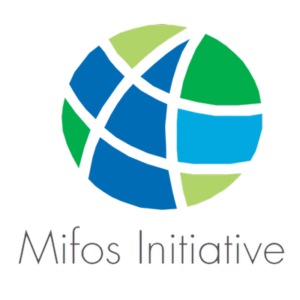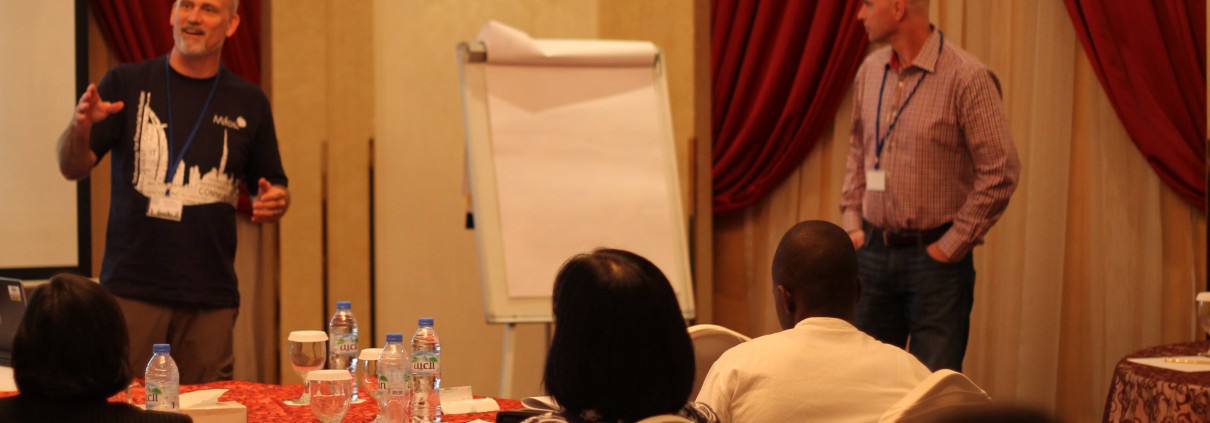The Roots of The Mifos Initiative
As told by James Dailey, Chief Innovation Officer, at the 2015 Mifos Summit
 Here is my Mifos story. Back in November 2001 I took a trip to visit a microfinance program outside of Hyderabad, India. I met a group of women who had gone through a process of learning how to save first, then to take out a loan – Microfinance-101. There were mountains of paper forms: forms for groups, for ledgers, for receipts, for new loans, for repeat loans filled out by the loan officers and for processing at a branch office. Aside from being profoundly humbled by the dedication these women had to bettering their lives, I realized that data really mattered to MFIs! Providing a service in the field efficiently and effectively mattered AND data enabled that.
Here is my Mifos story. Back in November 2001 I took a trip to visit a microfinance program outside of Hyderabad, India. I met a group of women who had gone through a process of learning how to save first, then to take out a loan – Microfinance-101. There were mountains of paper forms: forms for groups, for ledgers, for receipts, for new loans, for repeat loans filled out by the loan officers and for processing at a branch office. Aside from being profoundly humbled by the dedication these women had to bettering their lives, I realized that data really mattered to MFIs! Providing a service in the field efficiently and effectively mattered AND data enabled that.
I decided to stay the night in the branch office so I could be at the morning borrower meeting. That night, we were literally locked into the same room as the safe with a guard and shotgun downstairs and another outside. As I fell asleep staring at stacks of paper forms, and imagining similar rooms, thousands of them across the world, I had an epiphany: there had to be a better way. 
As I watched the data being entered into a PC the next day, I came to understand that there was no easy ‘low cost’ system for microfinance operations. Instead they and many others had built their own portfolio systems, or were trying to or they were working with under capitalized software companies. MFIs implementing their own systems made as much sense as everyone writing their own operating system, so that’s when an idea popped in: Why not an open source, community driven operating system for financial services?
That was November 2001. I returned to Seattle trying to figure out where to start. I did what any rational person with an idea burning in his brain – I kept working on it trying to figure out the market and the use case requirements, which not-incidentally got me into some of the earliest mobile money experiments in Africa, but that is another story.
This was an idea that I couldn’t shake. In early 2003 I wrote a thought piece “white paper” that got published on the CGAP website – “The Case for Automating Microfinance with an Open Source Architecture””. I found common cause with Tapan Parikh a computer science PhD student at the University of Washington. We went to India, Mexico, Honduras & Nigeria gathering requirements and building a prototype.
Eventually we gathered people to the vision of a community driven effort to lower the costs of IT for all MFIs globally by having a shared repository of requirements, a run-time system freely available, and the ability to build on top of it by local software. Two early and stalwart supporters were Suresh Krishna at Grameen Koota and Essma Ben Hamida at ENDA.
Our basic argument was that a software that was universally relevant, built well and that could pull in additional resources and functionality over time would solve the problem of the lack of investment in IT systems for financial inclusion, creating a virtuous product cycle.
While our roots are in microfinance, even at the beginning we had hopes that Mifos would serve a wider market – credit unions, saving groups, SACCOs, post offices. The concept was basic – create a better, lower cost, software-as-commodity data system for any kind of financial offering.
Aside from being open source, early on we also made the decision to place ourselves firmly in the world of the connected “mobile” device and choose an “online centralized model”. When we started, that was counter-intuitive; today no one would willingly go back to federated data and single branch databases.
Mistakes and learning from those mistakes is also in our DNA. In the summer of 2006, just before our first release, Terry Wong and I did a review of where we were and gave ourselves very poor marks indeed on a number of fronts:
It went something like this:
- Deployability – easy to deploy for the technical team at a mid-sized MFI.
- Extensibility – easy to build on top of, components, documentation.
- Maintainability – easy to keep the code base up to date with latest tools, and approachable to developers.
- Scalable – could be used by hundreds of users and thousands transactions per day.
Today these measurements of quality are still important and we are MUCH better than we were in 2006 and are improving every day.
Without many of the Mifos supporters and key people – like Emily Tucker, Vishwas Babu, Binny Gopinath, Ed Cable, Craig Chelius and Paul Maritz we wouldn’t be where we are today.
From where I stand, we have done an awesome job of staying true to our original intensions and building momentum. We have built a community of developers and we have created value for dozens of organizations. We have reached the critical mass needed to create the virtuous cycle, where requirements flow in, implementing partners earn a living by supporting new features, and financial service providers gain more value from their well-aligned data systems.
That brings me to the second major point I would like to make. We are in exactly the right place for a wave of change that is about to happen in the world of financial services and digital services. This wave is upon us.
For that I have to give you a few points:
- It’s not all about microfinance – it is about financial inclusion, especially savings products and payment systems that are dominating policy and funding discussions.
- Open source is generally accepted. The debate has been settled by the likes of IBM and Microsoft, by Goldman Sachs, Deutchebank, Credit Suisse Bank, JP Morgan. If the biggest financial system providers on the planet are using open source, its safe for you to go that route. Period.
- Formal banks are no longer held in high regard, post 2008 collapse.
- We live in the age of crypto currencies. The concept that Bitcoin introduced of low cost transactions, low cost clearing and low cost settlement is possible.
- Mobile devices outnumber credit cards now. We are seeing Apple Pay, Samsung Pay, Google Pay introduced globally.
Mifos hopes to put financial services into a commodity model. Open source software, freely available, makes a mockery of the idea that big closed proprietary systems are required. Does Mifos do everything needed? Not yet, but we’re getting there.
This context that I’ve spoken of, payment disruptions, banking disruption, it means that microfinance institutions, credit unions, new mobile first savings clubs, mobile enabled lending systems, and s o on are the future.
o on are the future.
We’re right there. We see the wave. We can catch it by staying disciplined about core and non-core functionality, by building the right connectors into the new systems, by creating value for lots of distributed client-facing institutions.
I would close with the idea that we should state our vision clearly – inclusive finance as big as we can imagine it, open platform, open source, mobile first, cloud enabled…. scalable, extensible. This will help invite others to join with us. At the same time we need to get to work on the key features, architectural enhancements, and plug ins that demonstrate the value of the platform. The future role Mifos X will play in financial inclusion is exciting.





Leave a Reply
Want to join the discussion?Feel free to contribute!